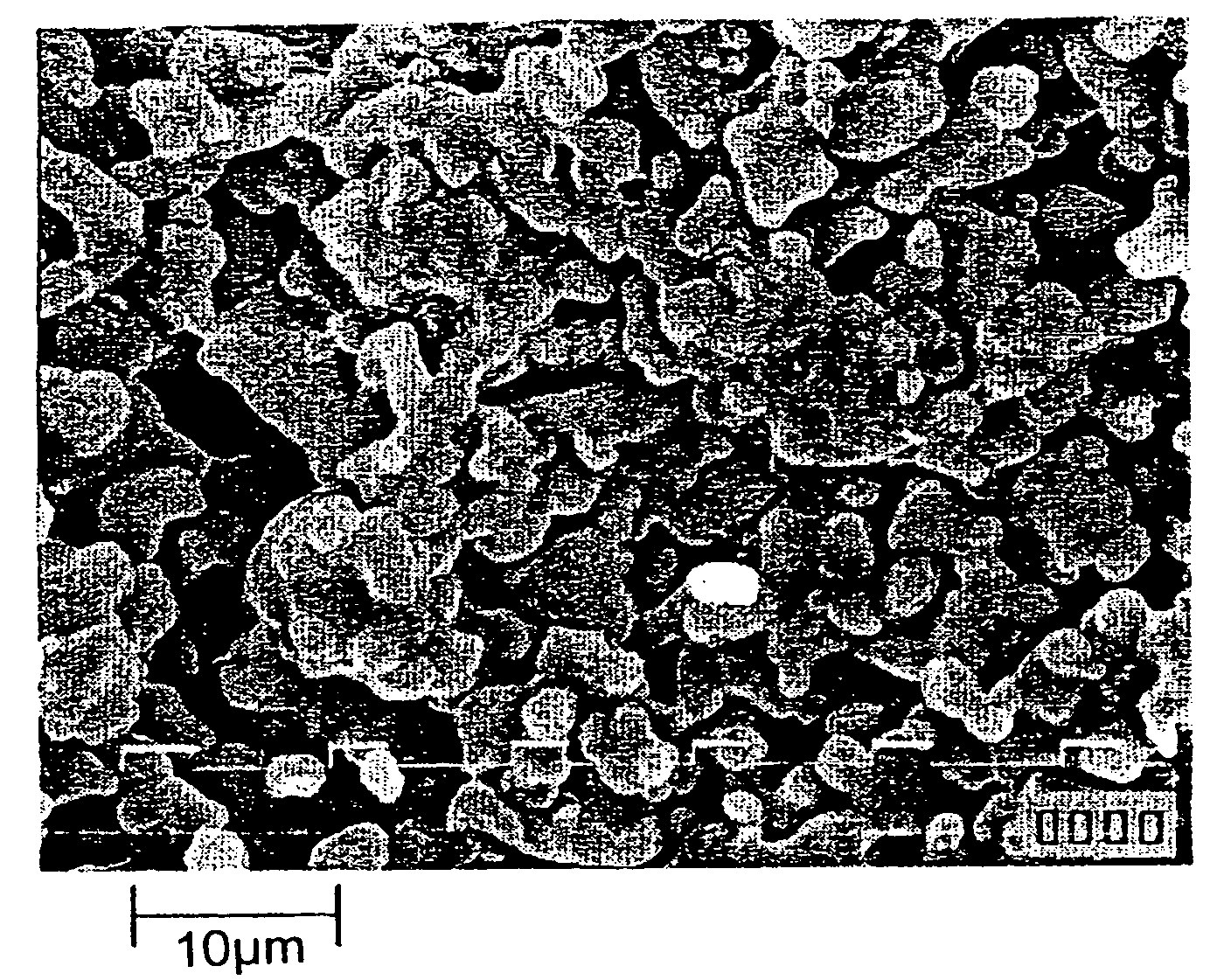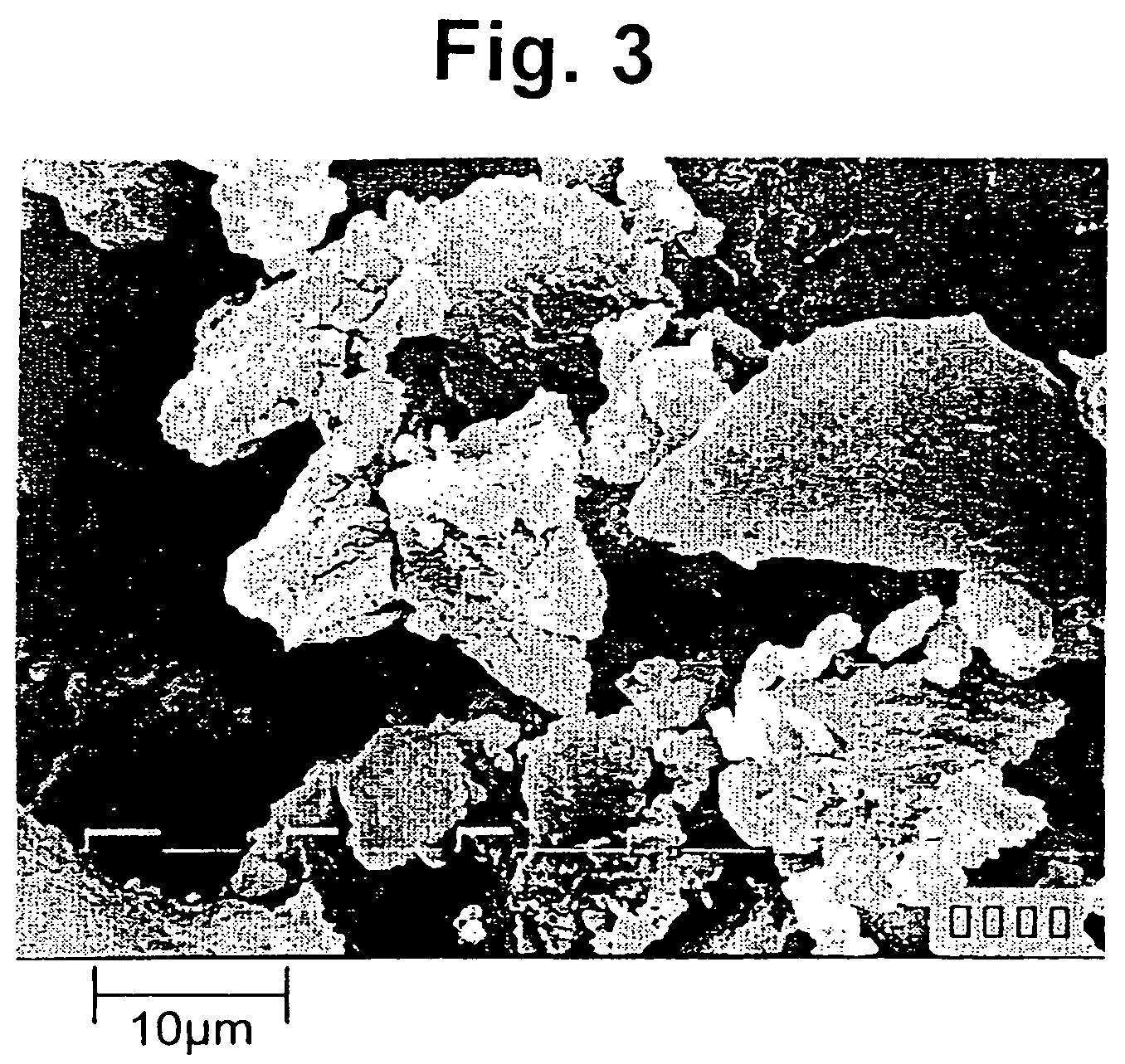Explosive material composition and method for preparing the same
a technology of explosive material and composition, which is applied in the direction of explosive compositions, ammonium perchlorate explosive compositions, weapons, etc., can solve the problems of difficult to obtain oxidizing agent particles having an average particle size of less than 5 m, low content of water in the agglomerate, and difficulty in molding such agglomerate, etc., to achieve a moderate mechanical strength
- Summary
- Abstract
- Description
- Claims
- Application Information
AI Technical Summary
Benefits of technology
Problems solved by technology
Method used
Image
Examples
example 1
[0064]83 parts of nitrate ammonium was added to 12 parts of water and dissolved by heating to obtain an aqueous oxidizing agent solution of about 90° C. A mixture of 1.7 parts of paraffin wax, 0.8 parts of microcrystalline wax and 2.5 parts of sorbitan fatty acid ester surfactant was heated and melted to obtain an oil ingredient of 92° C. A heat-insulated container was charged with the oil ingredient. The aqueous oxidizing agent solution was gradually added to the oil ingredient and the mixture was stirred at 600 rpm for 1 minute and 1600 rpm for 1 minute using a propeller blade stirrer to obtain a water-in-oil emulsion of about 90° C. The water-in-oil emulsion was cooled to room temperature. To 100 parts of the water-in-oil emulsion was added 25 parts of sodium salt of carboxymethyl cellulose (available from Nacalai Tesque, Inc., average particle size 65 μm) functioning as a thickener, and mixing was conducted using a mixer to obtain a mixture.
[0065]A part of the mixture was vacuum...
example 2
[0069]73 parts of ammonium nitrate and 10 parts of guanidine nitrate were added to 12 parts of water and dissolved by heating to obtain a mixed aqueous solution of an oxidizing agent and a fuel of about 90° C. A mixture of 2.5 parts of microcrystalline wax and 2.5 parts of sorbitan fatty acid ester surfactant was heated and melted to obtain an oil ingredient of 92° C. Then, emulsification was conducted under the same conditions as in Example 1 to obtain a water-in-oil emulsion. The water-in-oil emulsion was cooled to room temperature. Subsequently, 10 parts of sodium salt of carboxymethyl cellulose was added to 100 parts of water-in-oil emulsion and mixing was conducted using a mixer. Thereto was added 1.7 parts of activated carbon which is a reducing agent, followed by mixing and a mixture was obtained.
[0070]The mixture was granulated using a 500 μm mesh standard sieve (JIS 8801-1) and the granules were dried at 105° C. for 4 hours to obtain an explosive material composition. The w...
example 3
[0072]A mixture was obtained in the same manner as in Example 1 except that 10 parts of polyvinyl pyrrolidone (Luvitec K90, available from BASF) was used instead of sodium salt of carboxymethyl cellulose and that 1.7 parts of activated carbon was added. After granulating the mixture through the same standard sieve as in Example 2, vacuum drying was conducted at room temperature for 4 days to obtain an explosive material composition. The water content of the explosive material composition was 0.30%. When examined under a microscope, the explosive material composition was found to be agglomerates in which particles having a size of less than 5 μm are combined via the oil ingredient and the thickener.
PUM
| Property | Measurement | Unit |
|---|---|---|
| particle size | aaaaa | aaaaa |
| softening point | aaaaa | aaaaa |
| particle size | aaaaa | aaaaa |
Abstract
Description
Claims
Application Information
 Login to View More
Login to View More - R&D
- Intellectual Property
- Life Sciences
- Materials
- Tech Scout
- Unparalleled Data Quality
- Higher Quality Content
- 60% Fewer Hallucinations
Browse by: Latest US Patents, China's latest patents, Technical Efficacy Thesaurus, Application Domain, Technology Topic, Popular Technical Reports.
© 2025 PatSnap. All rights reserved.Legal|Privacy policy|Modern Slavery Act Transparency Statement|Sitemap|About US| Contact US: help@patsnap.com



